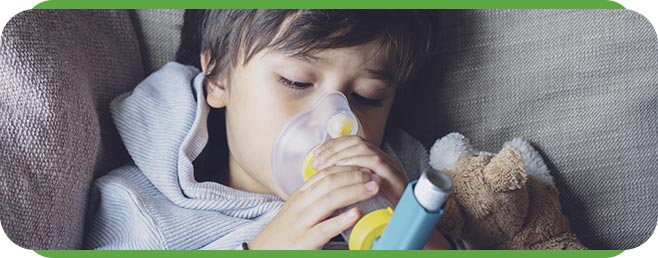Why Is My Child Having Trouble Breathing at Night?
Treatment for Children’s Obstructive Sleep Apnea (OSA) focuses on correcting breathing difficulties that occur during sleep, which can impact a child’s development and well-being. Depending on the severity, treatment options may include lifestyle adjustments, oral appliance, CPAP therapy, or surgery. Koala® Center For Sleep & TMJ Disorders offers customized treatment plans designed to effectively manage OSA and improve your child’s sleep quality and overall health. For more information, please contact us today or book an appointment online now! We have convenient locations in Peoria/Dunlap IL, and Wausau WI.


Table of Contents:
What are the most common symptoms of sleep-disordered breathing in children?
What are the first line approaches to treating sleep-disordered breathing in kids?
Is breathing-related sleep disorder curable?
How do doctors diagnose sleep-disordered breathing in children?
It can be concerning to hear your child struggling to breathe while they sleep. Sleep-disordered breathing, known as SDB for short, is more common in children than many parents realize. Common symptoms of SDB include:
● Snoring – Persistent, loud snoring is one of the most common symptoms of SDB in children. Occasional snoring isn’t typically a concern, but nightly or very loud snoring could signal an issue.
● Labored breathing during sleep – If you notice your child struggling to breathe with pauses, gasping, or choking noises during sleep, this could indicate obstructive sleep apnea.
● Restless sleep – Kids with SDB may toss and turn, sweat excessively, or sleep in unusual positions to keep their airways open.
● Daytime symptoms – Not all symptoms are limited to nighttime. Kids with SDB often exhibit daytime sleepiness, irritability, and difficulty concentrating. In some cases, they may even be misdiagnosed with behavioral disorders like ADHD because of hyperactivity and attention problems stemming from poor sleep quality.
Children with milder symptoms of SDB may be treated through:
● Behavioral interventions – If obesity is a contributing factor to SDB, lifestyle changes such as healthy diet modifications, regular exercise, and weight management may be recommended to reduce the severity of sleep-disordered breathing.
● Positive airway pressure (PAP) therapy – For children who have sleep apnea symptoms but are not suitable for surgery, continuous positive airway pressure (CPAP) or bi-level positive airway pressure (BiPAP) may be prescribed.
● Orthodontic interventions – Some children with SDB benefit from orthodontic treatments, such as rapid maxillary expansion (RME), to widen the upper jaw and improve airflow.
The treatment for sleep-disordered breathing in children depends on the underlying cause. Adenotonsillectomy—the removal of the adenoids and tonsils—is an often considered treatment approach, especially when the child experiences obstructive sleep apnea. Enlarged adenoids and tonsils are often related to airway blockage during sleep, especially in younger patients. By removing these tissues, doctors can often resolve or significantly reduce the severity of sleep apnea and related breathing issues.
Yes, sleep-disordered breathing in children is treatable, and in many cases, symptoms can be greatly reduced or even eliminated. The right treatment depends on the underlying causes and may involve a combination of interventions. For children with enlarged tonsils and adenoids, an adenotonsillectomy is highly effective, with many children experiencing a significant reduction or complete resolution of symptoms post-surgery.
However, the success of SDB treatment varies. For children whose SDB is related to other factors—such as obesity, structural abnormalities in the jaw, or chronic allergies—additional or alternative treatments may be needed.
It’s also important to monitor your child’s condition over time. While some kids may have a complete resolution of symptoms after treatment, others might need long-term management or follow-up care, especially if their SDB is related to factors like obesity or complex airway issues.
If you suspect your child has SDB, it’s essential to consult a doctor about their symptoms, preferably a sleep doctor. Your child’s doctor will ask about their sleep patterns, snoring, breathing difficulties, and daytime symptoms like irritability or concentration issues. In addition, the sleep doctor may examine the child’s tonsils, adenoids, and nasal passages to check for physical obstructions.
The gold standard for diagnosing sleep-disordered breathing, particularly obstructive sleep apnea, is an overnight sleep study. During this test, sensors are placed on the child’s body to monitor breathing patterns, oxygen levels, and heart rate during sleep. This comprehensive analysis helps doctors understand the severity of the breathing issues and identify any disruptions in sleep stages. Sleep studies can be performed at a sleep clinic or as a home study.
If structural issues are suspected during the diagnostic process, such as a small jaw or a deviated septum, the doctor may order imaging tests to get a clearer picture of the child’s airways. By considering various factors that could contribute to sleep-disordered breathing, our experts will work diligently to pinpoint the cause of your child’s symptoms.

Additional Services You May Need
▸ KoalaKIDZzz®
▸ Sleep Apnea
▸ Snoring
▸ TMJ Disorder
▸ Fatigue
▸ Sleep Disorders
▸ Weight Loss
▸ CPAP Alternative
▸ Oral Appliances




